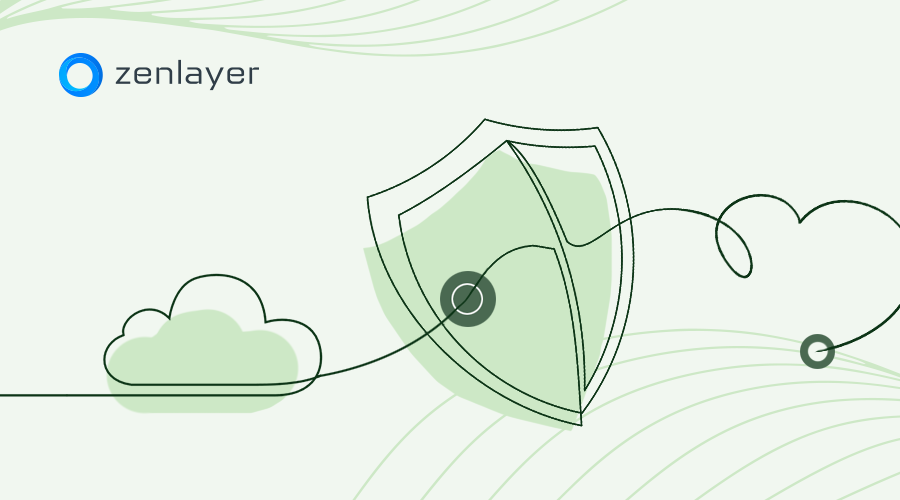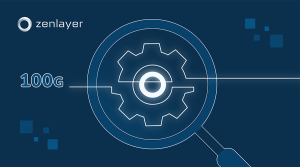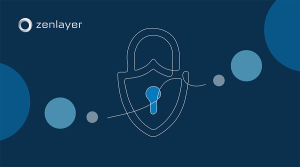In the fast-changing digital world of modern business, it is important to have the ability to deploy applications efficiently while ensuring the security of your data, code, and other information your business or organization depends on. Zenlayer’s Enterprise Cloud offers a comprehensive solution for scalability, performance, and security. As your business grows, so do your cloud infrastructure requirements. Organizations should have a plan in place for scalability and optimizing resource allocation to meet the specific requirements of their business or other operations.
The easier it is to accommodate future growth and fluctuations in demand, the less time and resources you will spend on reconfiguring infrastructure. This allows your organization to stay agile, manage costs, and provide uninterrupted service within the enterprise cloud environment.
With proper planning and a proactive approach, it’s easy to avoid common mistakes to ensure minimum disruptions and enhanced data security. In this article, I want to highlight some basic best practices and why taking a few simple steps in planning can make a big difference in getting the most of Zenlayer’s comprehensive cloud networking and compute solutions.
Scalability for Future Growth
When designing applications with scalability in mind you can accommodate future growth and fluctuations in demand. Zenlayer’s cloud infrastructure provides the flexibility to scale resources up or down based on the requirements of your business. Seamless scaling has many advantages, but most importantly, it reduces the risk of disruptions. One of the most valuable aspects of deploying applications on Zenlayer’s enterprise cloud is the ease in which it can be scaled and integrated with the necessary security features.
Optimizing resource allocation is crucial for meeting performance requirements without over-provisioning. Zenlayer’s enterprise cloud offers control and monitoring over resource allocation, allowing businesses to optimize their infrastructure based on specific application needs.
Using metrics and performance indicators, businesses can identify points where the flow of data, processes, or resources is significantly constrained. Proper resource allocation can identify bottlenecks that restrict the system’s ability to process tasks efficiently, decreasing output, and potentially impacting the system’s ability to handle increased workload demands. By deploying monitoring tools and using oversight data to adjust resources, you can quickly identify and correct problems with under-provisioning, over-provisioning, or instances of improper allocation of resources.
Zenlayer offers a range of solutions including redundant storage, load balancers, and auto-scaling capabilities to help mitigate the risks of sudden spikes in traffic.
Automation for Efficiency
The ability to streamline operations using technology saves a massive amount of time and human resources. There are many routine tasks that would take hours, days, or even weeks to complete without automation.
In addition to saving time, automation can reduce manual errors and improve overall operational efficiency. Some of the best examples would include provisioning resources, configuration management, scaling operations, monitoring and alerts, patch management, backup and recovery, and a range of other actions to increase efficiency and reduce costs.
Automation allows teams to focus on innovation and strategic business initiatives instead of being bogged down with routine operational tasks and analyzing massive amounts of data. Streamlining repetitive tasks and reducing the need for manual intervention should be an essential part of your plan.
Security Measures
Security must be a top priority and the threat landscape has never been so dynamic and sophisticated. Almost every day, companies are defending against malicious actors launching a wide range of attacks. Protecting digital assets requires vigilance and proactive measures to safeguard against ever-evolving cyber threats. Zenlayer’s enterprise cloud offers a comprehensive suite of security features to safeguard sensitive data and infrastructure assets.
Following the best security practices is essential to keeping sensitive data safe and maintaining trust with customers and stakeholders. By implementing additional security measures, organizations can mitigate cyber threats, prevent unauthorized access, and ensure the integrity and confidentiality of their digital assets.
Here are a few of the basics to consider when deploying your applications with the Zenlayer enterprise cloud:
Firewall
Having a good firewall strategy is crucial for safeguarding your infrastructure. As a security researcher, I know firsthand that misconfigured firewalls are a significant contributing factor in data breaches, with some studies concluding that nearly 30% of incidents are due to firewall errors.
Your firewall acts as a virtual barrier and allows for monitoring and controlling network traffic to protect the infrastructure from unauthorized access and other potential cyber threats. Having a properly configured firewall is the first step in ensuring data security and preventing unauthorized access to sensitive information stored within the cloud environment.
I also recommend that organizations create a security policy that is tailored to their specific needs. It should be a living document that is updated as needed. Depending on how you structure your internal security policy, it can include important information like what ports and protocols are being used, and if any of them are open and publicly accessible when they shouldn’t be.
Remember that misconfigured firewall settings can lead to data exposures and unauthorized access, so it is important to test after changes are made. Once the firewall is in place it is important to regularly update settings or rules to accommodate evolving threats or business requirements. Another consideration is to use segmentation to isolate sensitive data and applications. Logging and monitoring tools can help track network traffic and identify potential security issues, or exposed data.
Encryption
From startups to large corporations, it is a necessity to collect and store data, documents, files, and relevant information for daily operations. Encryption is the best way to ensure the confidentiality and the integrity of sensitive data. I always recommend implementing an encryption strategy that focuses on both data at rest and in transit. If data is accidently exposed or compromised by malicious actors, the encrypted files maintain their integrity and the information they contain is protected. Even as a security researcher when I discover encrypted files, I move on because there is virtually no way of decrypting them to see what they contain.
Another important fact is that encrypted files have little or no value to cyber criminals. Using industry-standard encryption algorithms such as Advanced Encryption Standard (AES) combined with strong randomly generated keys and secure key management storage practices is a very effective method of protecting your sensitive data. Additionally, consider employing end-to-end encryption for communication between cloud services and clients to enhance data protection across the entire transmission pathway.
Remember that threats and security standards are always evolving, so be sure to update encryption protocols to mitigate emerging threats. Avoid using older encryption algorithms such as MD5 for data encryption (due to vulnerabilities such as collision attacks where two different inputs produce the same hash value when processed by a hash function) when there are stronger alternatives like SHA-256 or SHA-3.
By adhering to the basic best practices for encryption, organizations can maximize the security posture of their Zenlayer enterprise cloud deployments and protect their data against unauthorized access and potential breaches. If you collect, store, or transmit sensitive data, encryption is a must!
Intrusion detection systems
Early threat detection is vital for safeguarding critical assets. During any security incident, every second counts. Implementing intrusion detection systems (IDS) allows you to continuously monitor network traffic and system activity. The IDS can also identify suspicious patterns, anomalies, known attack signatures, and unauthorized access attempts or intrusions.
Additionally, the system can assist with rapid incident response and mitigation, including proactively identifying vulnerabilities or misconfigurations. It is like having a security guard who is always looking for something suspicious and then notifies you immediately when they have found something that needs your attention. The IDS can be configured to trigger alerts, log events, or take additional actions such as blocking traffic or notifying administrators.
It is important to take the time to review this information and never ignore suspicious alerts. An IDS is an invaluable tool for fortifying the defenses of enterprise cloud deployments against cyber threats and improving security defenses.
Backup and disaster recovery
In the world of technology, we always say it is not if something will happen, but when something will happen. Being prepared and having a plan in place can make the difference between a catastrophic loss of data or a simple and painless recovery with minimal downtime.
There are many unforeseen threats that pose a serious risk to an organization’s data such as hardware failures, natural disasters, or cyberattacks. It is imperative to have a backup and disaster recovery strategy in place. The Zenlayer enterprise cloud provides failover mechanisms to ensure availability and redundant infrastructure components, such as servers, storage, and networking resources, so that if one component experiences a problem the traffic is automatically rerouted to backup resources without causing an interruption in services.
Disasters come in all shapes and sizes, but rapid failover mechanisms and recovery procedures can minimize downtime and ensure that operations resume immediately.
In conclusion, when deploying applications on Zenlayer’s Enterprise Cloud, the value of efficiency and security cannot be overstated. By implementing these best practices, enhanced security measures, strategic design, and planning, organizations can not only optimize their workflows but also fortify their digital assets against cyber threats and human error. Taking these basic yet critical steps, organizations can unlock the full potential of enterprise cloud services, driving innovation, resilience, and growth.







